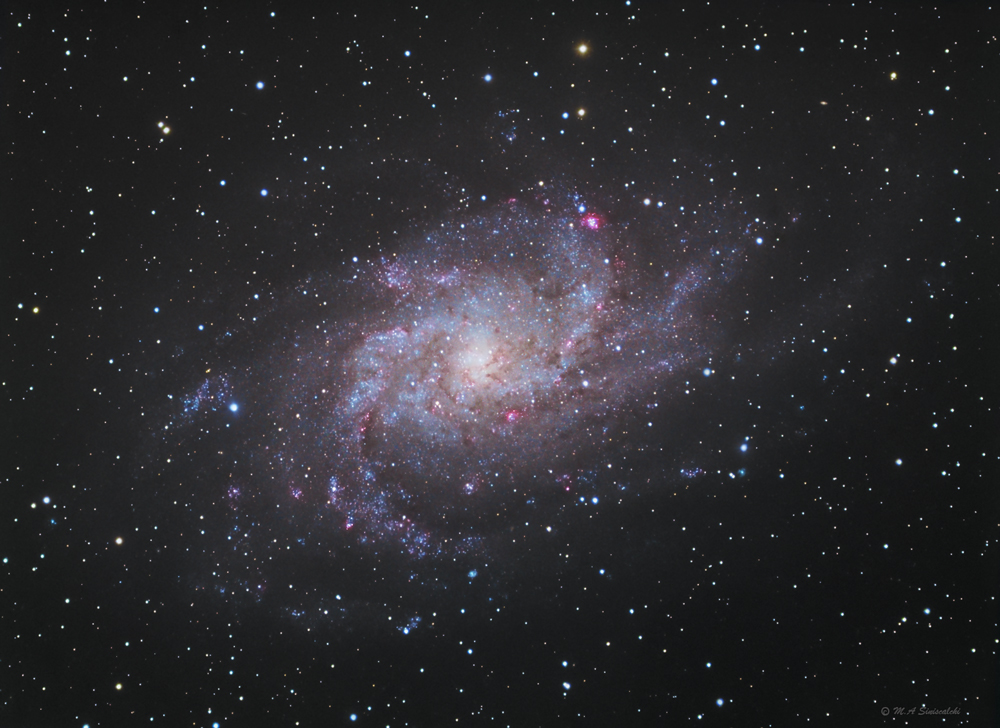© 2022 Michael A. Siniscalchi
Messier 33
Spiral Galaxy in Triangulum
RA:01h 33m 47s Dec: +30° 30' 00" Distance - ~2.73 million ly Size ~60,000 ly
Click on image for larger size
Wikipedia-
The Triangulum Galaxy is a spiral galaxy 2.73 million light-years (ly) from Earth in the constellation Triangulum. It is catalogued as Messier 33 or NGC 598. The Triangulum Galaxy is the third-largest member of the Local Group of galaxies, behind the Andromeda Galaxy and the Milky Way. It is one of the most distant permanent objects that can be viewed with the naked eye.
The galaxy is the smallest spiral galaxy in the Local Group (although the smaller Large and Small Magellanic Clouds may have been spirals before their encounters with the Milky Way), and is believed to be a satellite of the Andromeda Galaxy or on its rebound into the latter due to their interactions, velocities, and proximity to one another in the night sky. It also has an H II nucleus.
The galaxy gets its name from the constellation Triangulum, where it can be spotted.
It is sometimes informally referred to as the "Pinwheel Galaxy" by some astronomy references,in some computerized telescope software, and in some public outreach websites. However, the SIMBAD Astronomical Database, a professional database, collates formal designations for astronomical objects and indicates that Pinwheel Galaxy refers to Messier 101, which several amateur astronomy resources including public outreach websites identify by that name, and that is within the bounds of Ursa Major.
